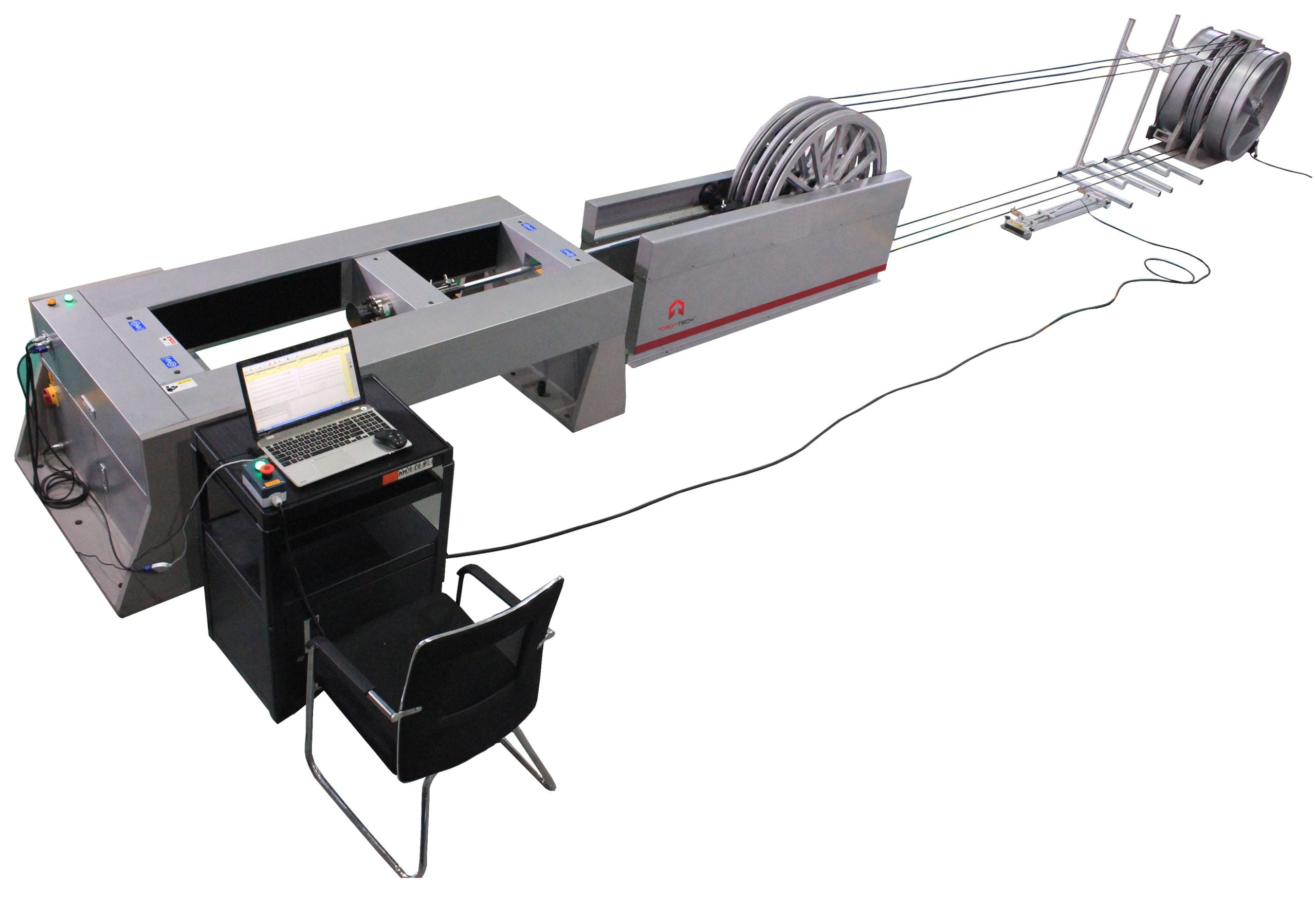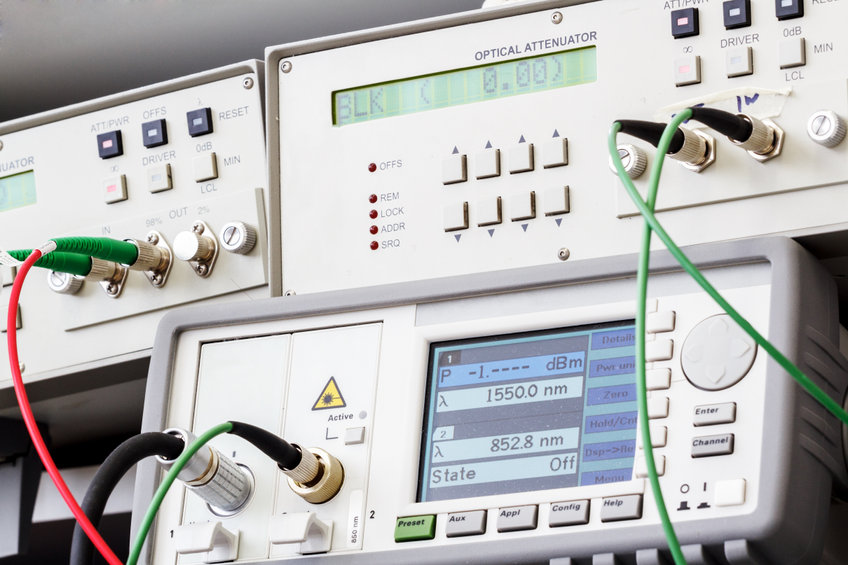Discover the Relevance of Optical Fibre Screening in Modern Telecommunications
In the realm of modern-day telecommunications, the relevance of optical fiber screening can not be overemphasized, as it offers as the foundation for making sure network reliability and performance. What are the certain advantages that regular screening deals, and exactly how might it shape the future landscape of telecoms?

Understanding Optical Fibre Screening
Optical fibre screening is an essential procedure in telecommunications that ensures the stability and efficiency of fiber optic networks. This testing incorporates a variety of procedures created to evaluate the physical and functional attributes of optical fibers - optical fibre testing equipment. Secret criteria examined consist of optical power loss, data transfer capability, and mistake area, which are important for preserving top quality interaction links
The testing procedure typically entails the usage of customized devices such as Optical Time-Domain Reflectometers (OTDR) and Optical Power Meters. OTDRs are utilized to recognize and identify faults, splices, and connectors within the fiber, while power meters measure the transmitted light signal strength to determine effectiveness.
Moreover, testing is conducted at numerous phases, consisting of during installation, maintenance, and troubleshooting, to make sure that the network meets market standards and operational demands. Compliance with standards established by companies like the International Telecommunication Union (ITU) and the Telecoms Industry Organization (TIA) is extremely important.
Advantages of Regular Evaluating
Routine screening of optical fibers yields numerous benefits that significantly improve network dependability and performance. One of the main benefits is the early detection of possible concerns, such as breaks or deterioration in the fibre, which can bring about costly downtime if left unaddressed (optical fibre testing equipment). By recognizing these problems proactively, telecommunications service providers can reduce solution disturbances and make sure regular connection for their customers
In addition, regular testing helps to maintain the integrity of signal high quality. As optical fibres age, their performance can be impacted by aspects such as ecological problems and physical stress. Routine evaluations permit the surveillance of signal loss and overall transmission effectiveness, making certain that the network operates at optimum degrees.
One more considerable benefit is compliance with sector requirements. Regular screening sustains adherence to regulative needs, therefore mitigating lawful and financial risks related to non-compliance. Moreover, it enhances the total life-span of the fibre infrastructure by helping with timely repair and maintenance.

Usual Checking Techniques
Testing optical fibers utilizes numerous approaches to make certain the stability and performance of telecoms networks. Among one of the most usual strategies is Optical Time Domain Reflectometry (OTDR), which examines the whole length of the fiber by sending out a pulse of light and gauging the reflections created by imperfections or breaks. This approach supplies in-depth details regarding the area and intensity of faults.
Another common technique is the use of this contact form Optical Power Meters, which gauge the quantity of light transmitted with the fibre. This technique helps identify the loss of signal stamina, ensuring that it fulfills sector requirements. Additionally, Visual Fault Locators (VFL) are employed to determine breaks or serious bends in the fibre by predicting a noticeable laser light right into the cord.
Insertion loss screening is additionally vital, as it evaluates the loss of signal power resulting from connections and interlaces within the network. The use of Polarization Setting Dispersion (PMD) screening assesses the influence of fibre attributes on signal integrity.
Each of these approaches plays a vital duty in preserving the performance and reliability of optical fibre networks, inevitably adding to seamless telecoms procedures.
Effect on Network Efficiency
The integrity and performance of optical fiber networks directly affect general network efficiency. In modern-day telecommunications, the effectiveness of data transmission counts heavily on the high quality of the optical fibres used. Any kind of destruction in the fibre's condition-- whether because of physical damage, contamination, or extreme bending-- can bring about raised attenuation and signal loss, significantly affecting data honesty and speed.
Regular optical fiber testing is important to determine and rectify prospective issues prior to they show up as network failings or downturns. Methods such as Optical Time Domain Name Reflectometry (OTDR) and insertion loss screening make it possible for technicians to gauge the efficiency of fibre web links precisely. These tests not only review the physical condition of the fibres but likewise ensure compliance with industry criteria, therefore guarding the network's reliability.
Furthermore, a well-kept optical fibre network adds to lowered functional costs and enhanced client contentment, as end-users experience less interruptions and greater data rates. Ultimately, the focus on strenuous optical fibre screening methods acts as a keystone for sustaining robust telecoms framework, guaranteeing that provider can fulfill the growing needs for bandwidth and connection in today's electronic age.
Future Trends in Examining
As we look ahead, innovations in technology are poised about his to reshape optical fiber testing in telecommunications. The surge of automation and man-made intelligence (AI) is expected to enhance the effectiveness and accuracy of screening processes. Automated testing systems can conduct extensive assessments with marginal human intervention, dramatically minimizing the potential for errors and expediting time-to-deployment.
Additionally, the assimilation of artificial intelligence formulas will certainly allow anticipating maintenance, permitting network carriers to foresee prospective concerns before they escalate right into failures. This positive method not only boosts network reliability however also maximizes functional costs.
One more emerging trend is the advancement of mobile testing gadgets that use real-time analysis - robotic vision. These devices will certainly equip technicians to perform on-site diagnostics rapidly, helping with quicker resolutions and enhancing service quality
The expansion of 5G networks even more necessitates the advancement of testing approaches. As bandwidth demands raise, conventional testing techniques might no longer suffice. Cutting-edge options such as optical time-domain reflectometry (OTDR) and advanced spooky analysis will become important in ensuring the stability and performance of high-speed connections.

Verdict
Finally, optical fibre testing is essential for making certain the stability and reliability of contemporary telecommunications networks. Routine screening methods not only assist determine potential problems such as signal loss and mistakes yet likewise add click for info to boosted network efficiency and customer contentment. As the demand for smooth connectivity proceeds to expand, the adoption of advanced testing approaches will certainly play an important duty in keeping high-grade network requirements and sustaining the advancing landscape of telecoms.
Comments on “Robotic vision enables streamlining manufacturing and quality control.”